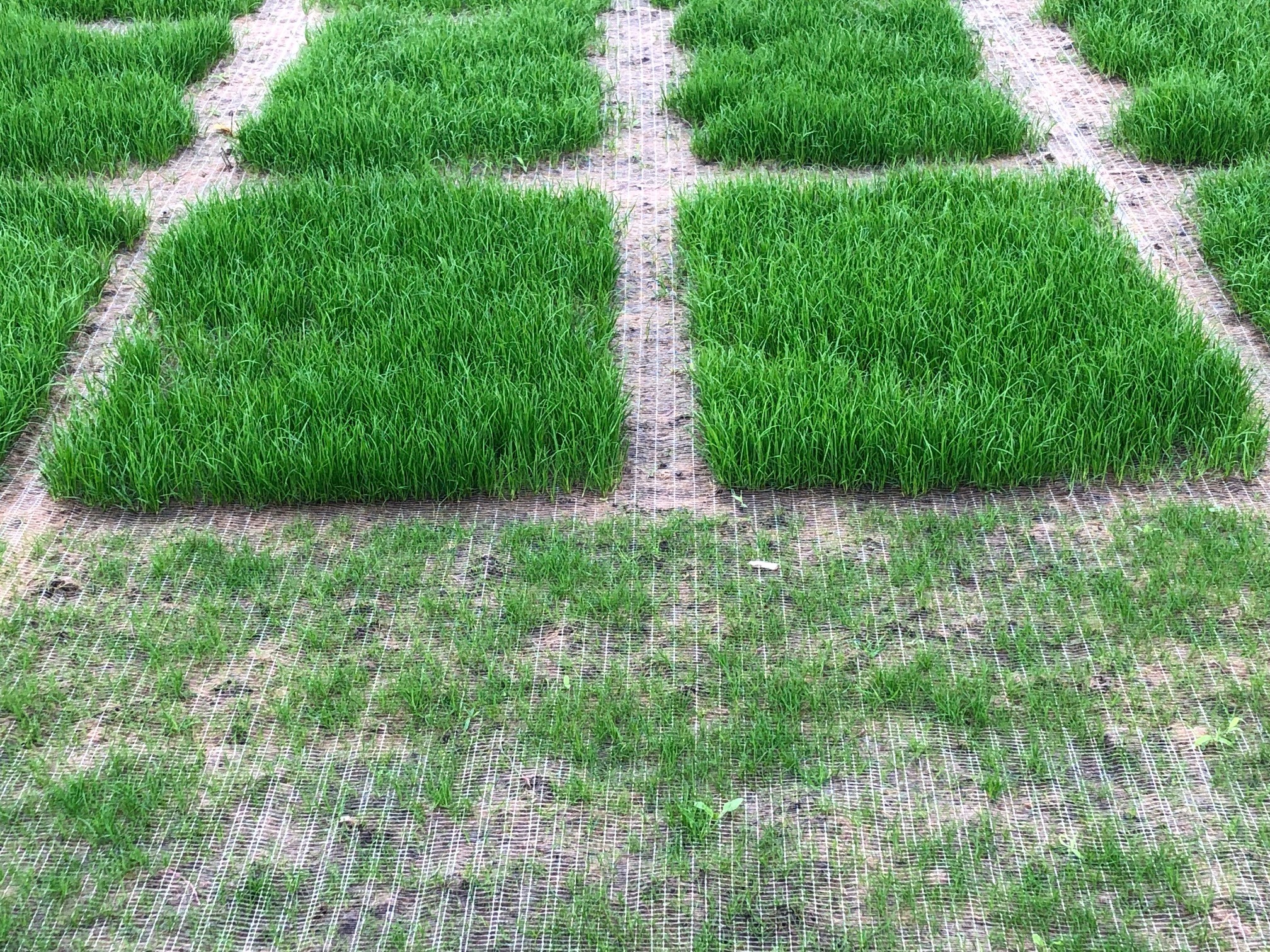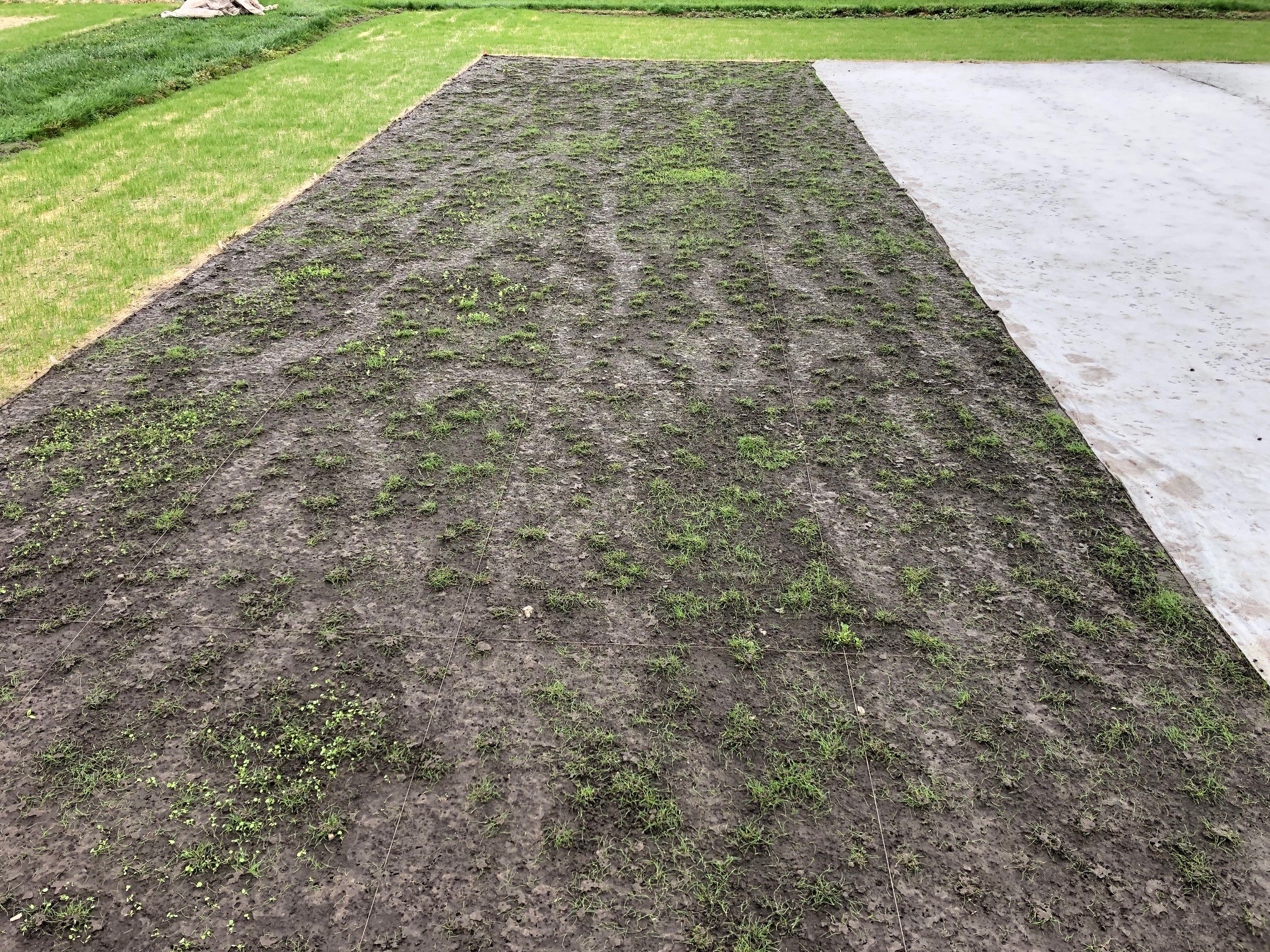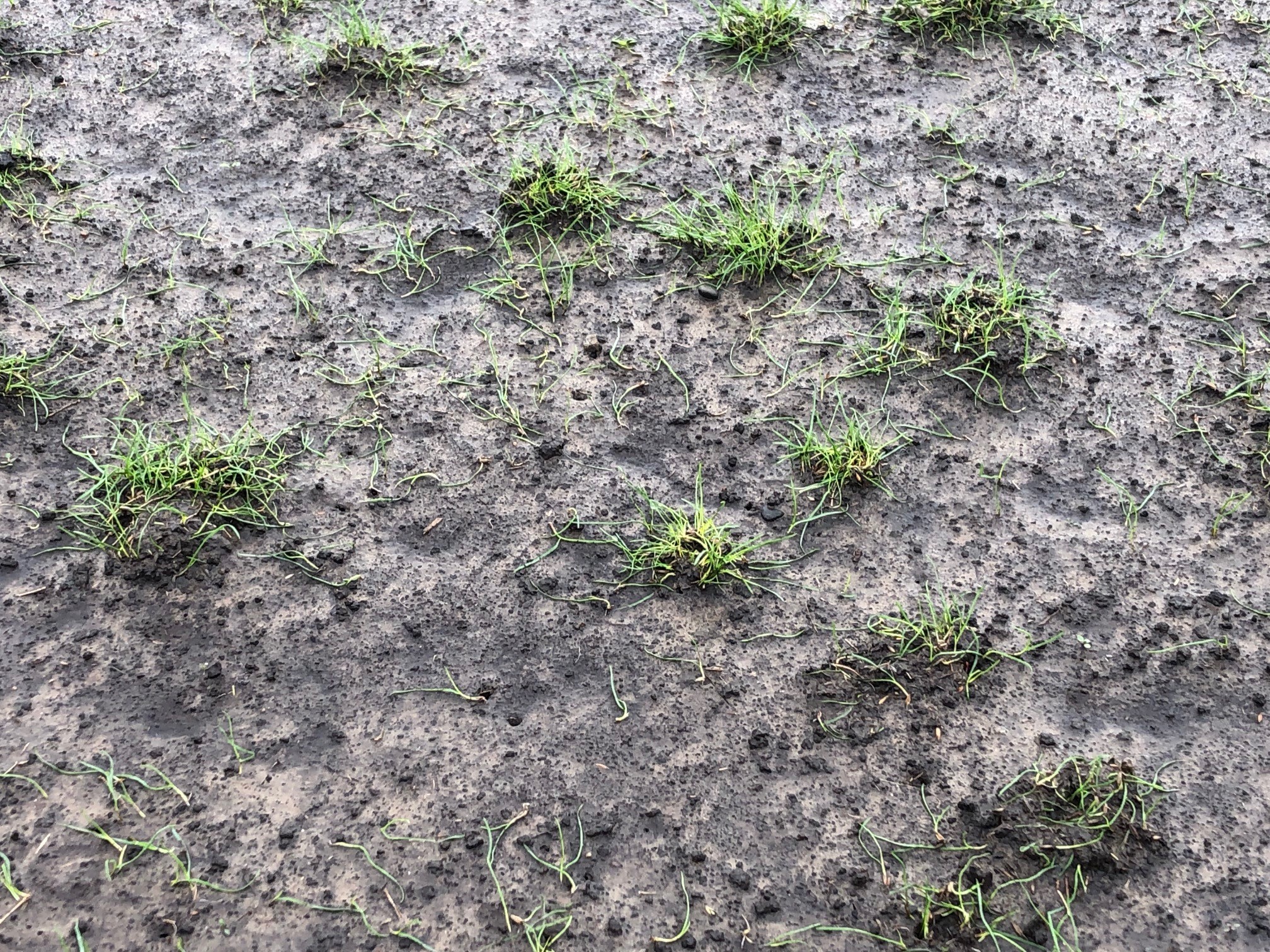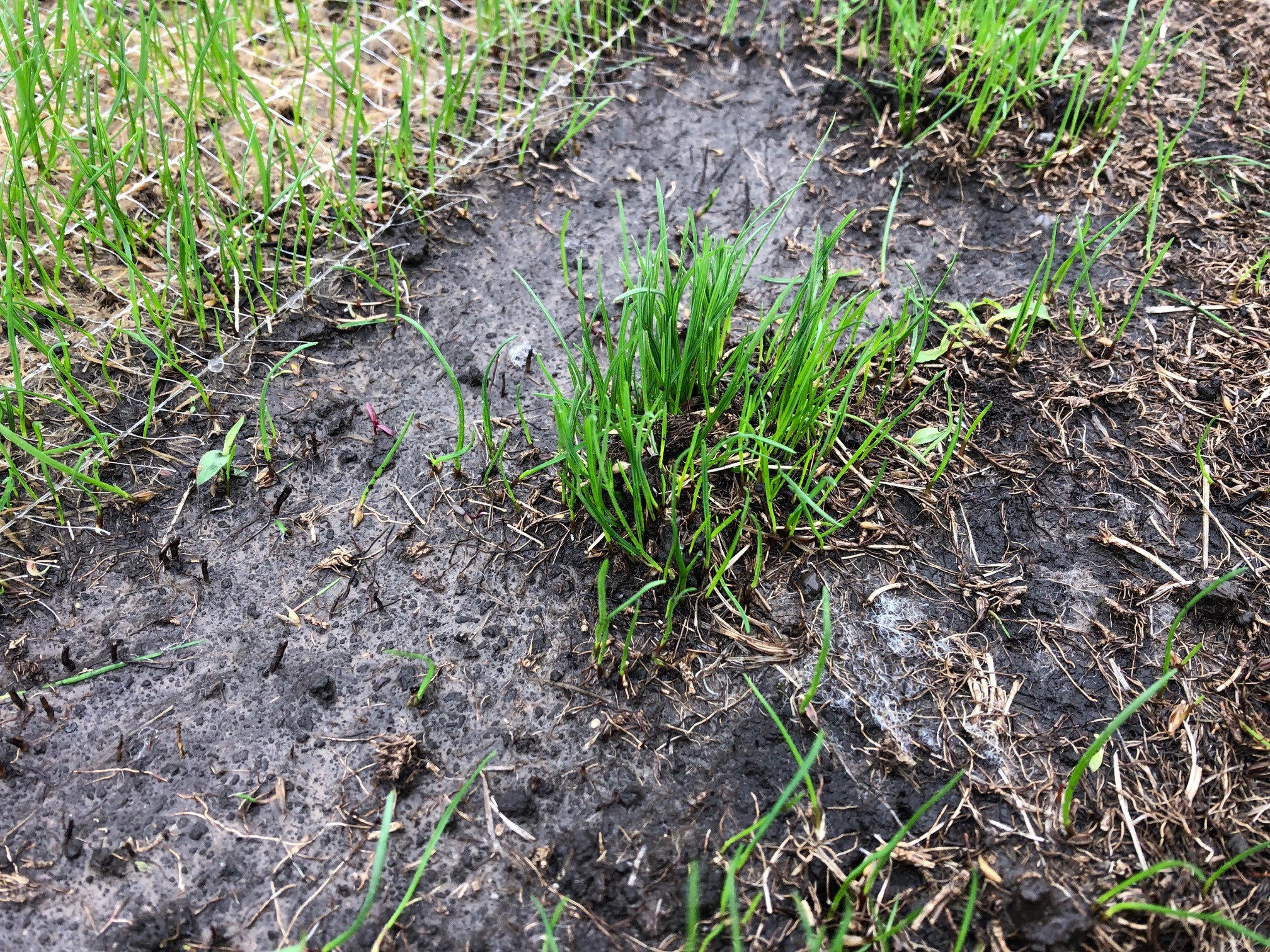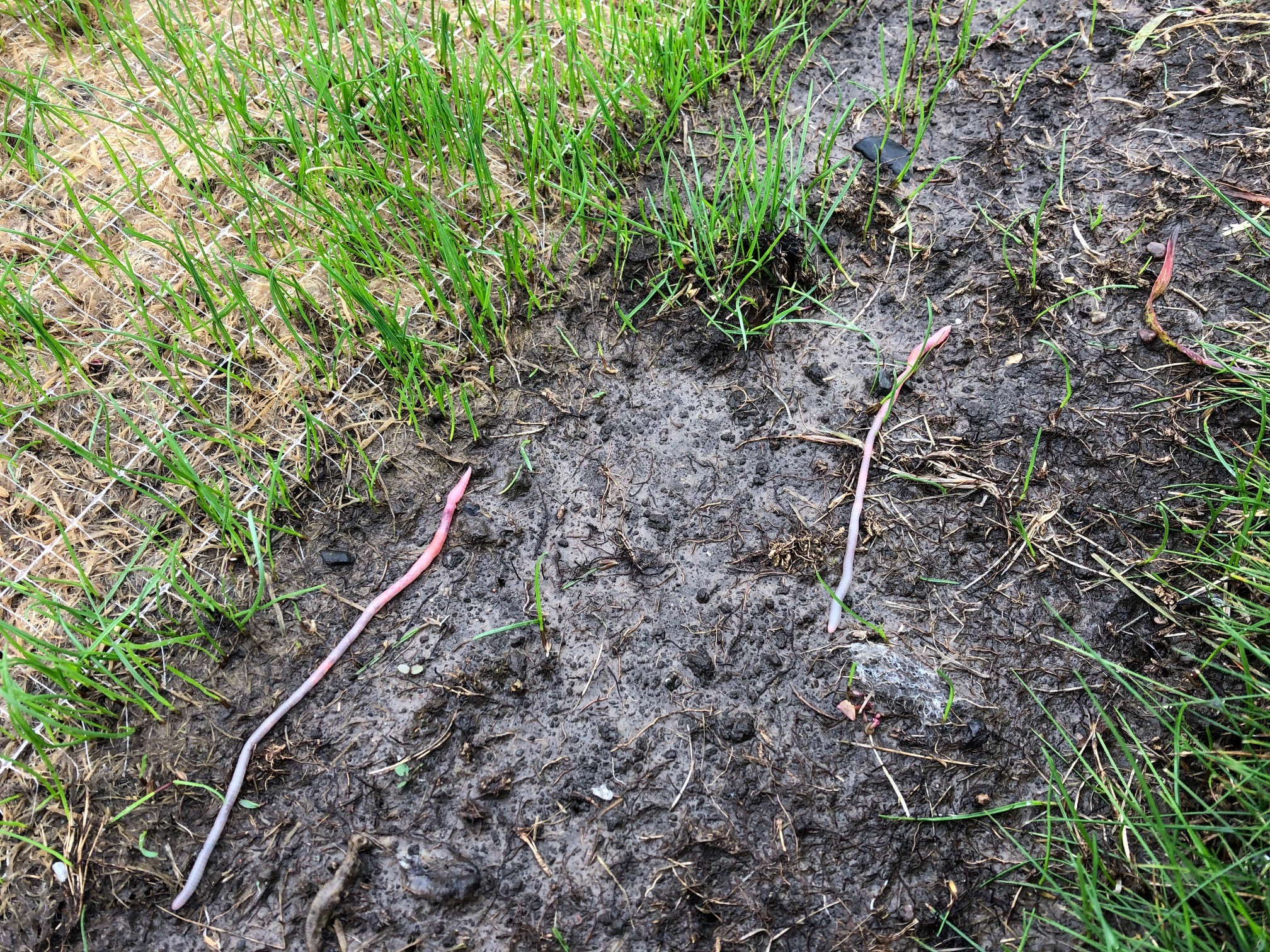When seeding our turfgrass research plots we often cover them using products designed to prevent erosion and increase germination. For most of our trials we have used a wood-based product that sticks to the soil surface once sufficient water is applied from irrigation or rainfall (Figure 1). Although these products are costly, they prevent the seed in plots from washing together and soil from being lost when heavy rains come.
In recent years we have used a different product for trials we are doing in conjunction with another university. These white blankets help keep the soil from drying out on the surface and limit the impact of rain and irrigation. They are also considerably cheaper but need to be removed shortly after germination. If left on too long, the grass grows through the blanket and is pulled out of the soil upon blanket removal.
With these removable blankets we have run into a number of challenges. One challenge is the attachment of these blankets to the soil. Although they are attached with typical sod staples, the fabric-like consistency makes keeping edges pinned down critical to prevent the blanket from becoming a kite. This has led us to use two to three times as many staples along the seams in hopes of keeping them in place.
Another issue we have had is with sites where there are considerable earthworm populations (Figures 2 and 3). Because these blankets do not stick to the soil surface and possibly because the earthworms cannot crawl through the blanket, the earthworms gather up the seed under the blanket and concentrate it around their holes (Figures 4 and 5). The weed seed gathering behavior of earthworms has been documented before (video, press release), but to turfgrass practitioners this might be new information. This behavior results in plots that lack uniformity and sometimes renders the trials useless. While this product is less expensive and has some convenient features, it is not ideal for many of our sites due to high earthworm populations.
